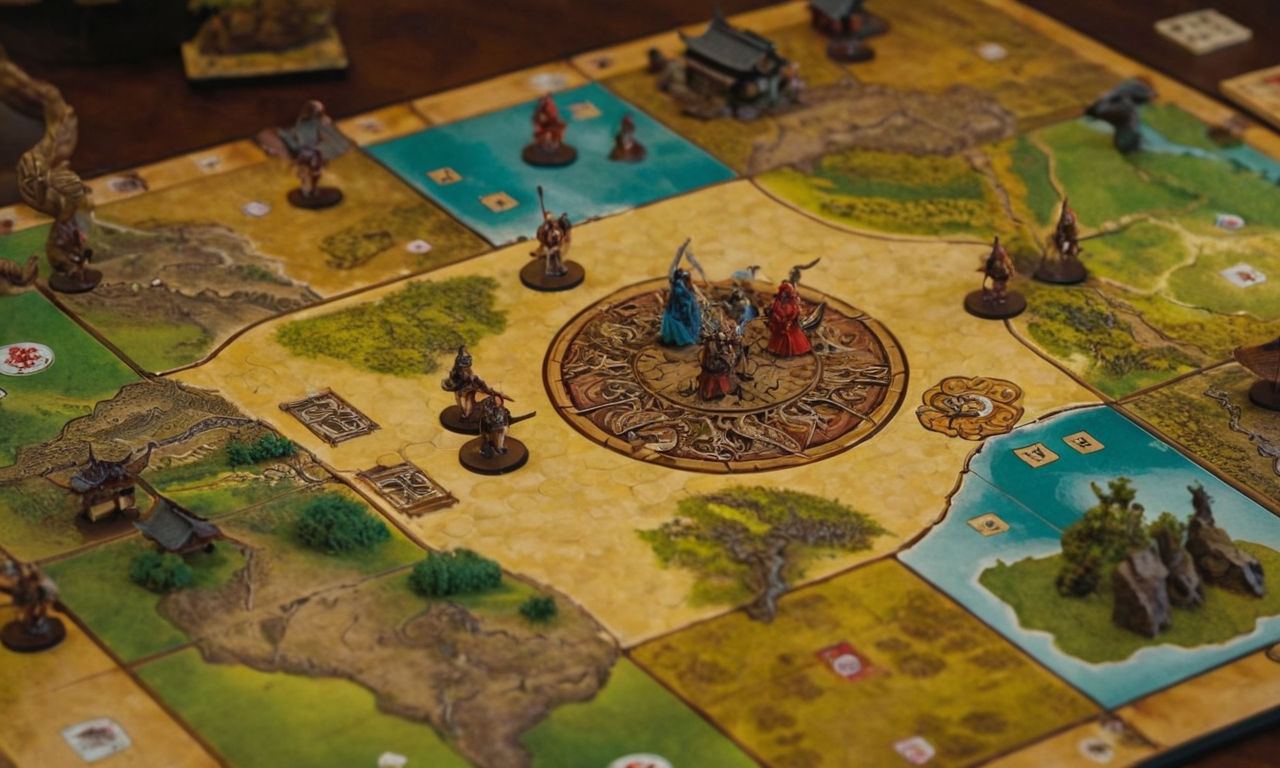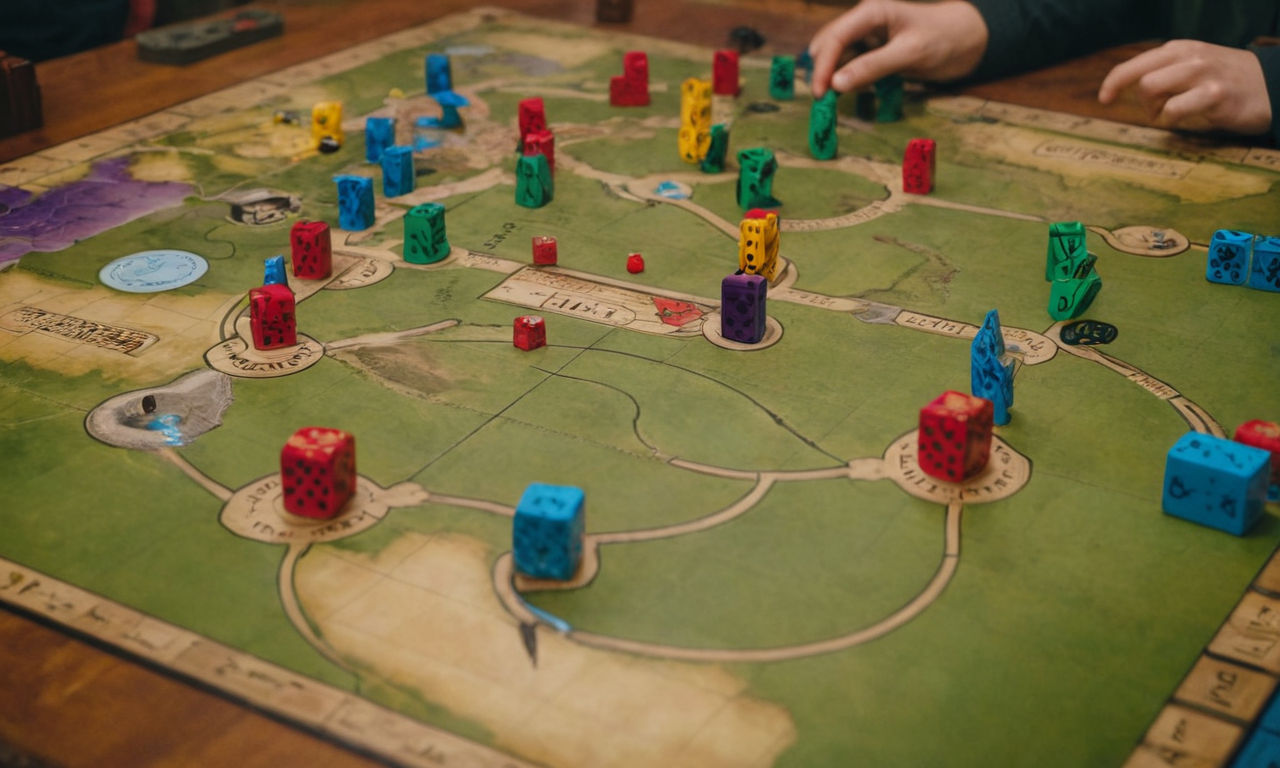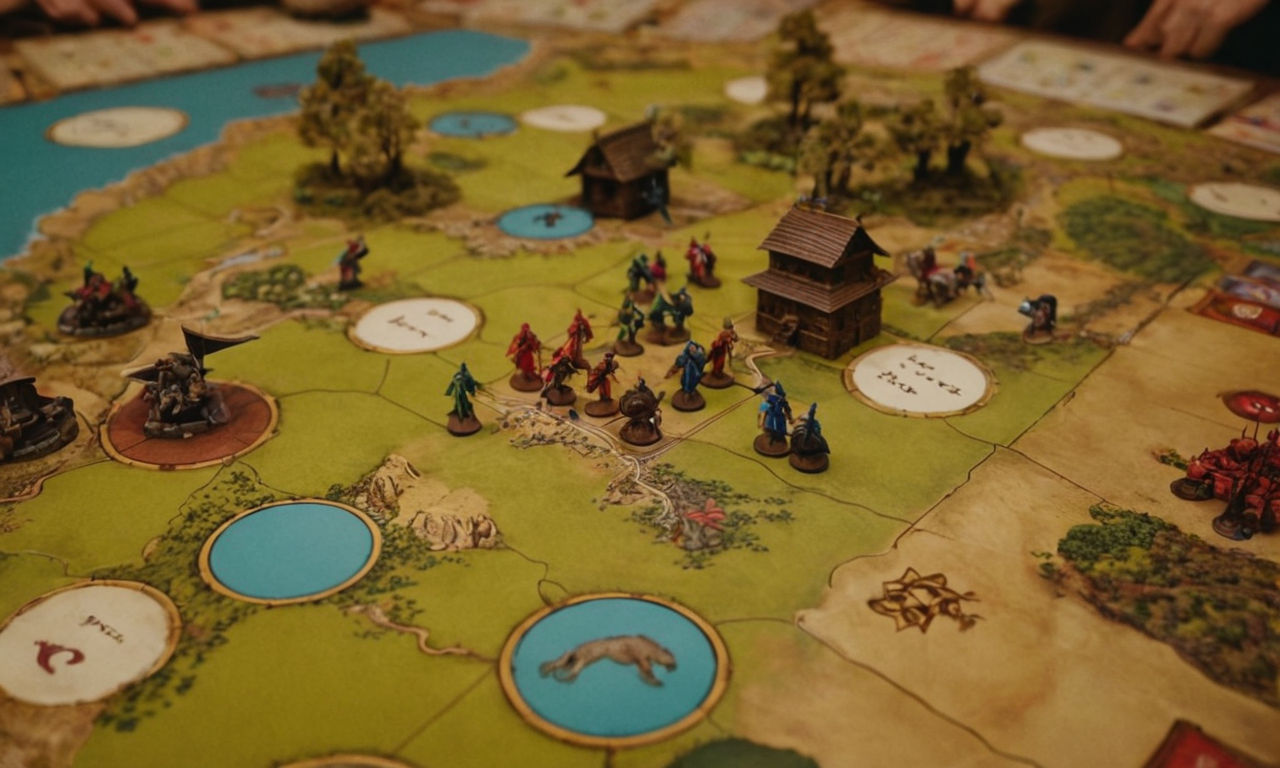Introduction
Rising Sun is a popular strategy board game known for its strategic depth and immersive gameplay. In this review, we will delve into the intricacies of Rising Sun, focusing on its strategic elements and gameplay analysis to understand what sets it apart in the world of strategy board games.
Game Overview
Rising Sun is set in a feudal Japan-inspired world where players take on the roles of different clans vying for power, honor, and control. The game's theme revolves around diplomacy, conquest, and alliances, providing a rich backdrop for strategic decision-making.
The main goal of Rising Sun is to accumulate the most victory points by mastering the delicate balance between warfare, alliances, and resource management. Players must navigate the ever-changing political landscape and outmaneuver their opponents to secure their position as the most dominant clan in the land.
Mechanics and Gameplay
Rising Sun features a blend of unique mechanics that make each game session dynamic and engaging. Key mechanics include:
Seasonal Actions: Players strategically choose actions during four different seasons, each offering distinct benefits and opportunities.
War Phase: Engage in battles with other clans to conquer territories and assert dominance on the board.
Alliance Tokens: Form alliances with other players to gain advantages and bonuses throughout the game.
Hiring Ronin: Utilize Ronin to bolster your forces and strengthen your position in conflicts.
The gameplay flow in Rising Sun is structured around each season, where players make decisions that impact their standing and alliances. Understanding the synergies between different actions and effectively leveraging them is crucial for success.
Analysis of strategic elements in Rising Sun involves evaluating the risk-reward dynamics of each decision, predicting opponents' moves, and adapting strategies based on the evolving game state. Successful players must balance aggression with diplomacy to come out on top.

Player Interactions
Player interactions play a pivotal role in shaping the outcome of Rising Sun. The negotiation aspect adds a layer of depth to the gameplay, as players must navigate alliances, betrayals, and shifting loyalties to further their own agendas.
The negotiation phase in Rising Sun allows players to forge temporary alliances, make deals, and backstab opponents to gain an edge. Understanding the motivations of other players, reading their intentions, and influencing their decisions are key skills that can tip the scales in your favor.
The impact of alliances and betrayals in Rising Sun extends beyond immediate gains, affecting trust dynamics throughout the game. Learning when to form alliances, when to break them, and how to maximize their benefits is crucial for mastering the intricacies of player interactions in Rising Sun.
Thematic Depth
Rising Sun is renowned for its immersive thematic elements that elevate the gaming experience. The game intricately weaves Japanese mythology and history into its gameplay, offering players a unique journey into a world of strategy and diplomacy. The thematic depth of Rising Sun extends beyond mere aesthetics, profoundly impacting strategic choices and player interactions.
The thematic elements in Rising Sun not only add visual appeal but also affect gameplay dynamics. For instance, alliances in the game are reminiscent of historical treaties and alliances among feudal lords in Japan.
The theme influences strategic decisions, as players navigate the intricate web of alliances, betrayals, and negotiations, mirroring the complexities of real-world diplomatic relationships.
Compared to other strategy board games, Rising Sun stands out for its rich thematic integration that seamlessly blends with its strategic mechanics, creating a cohesive and engaging experience for players.
Thematic Integration in Strategy Board Games
In the landscape of strategy board games, thematic integration plays a pivotal role in enhancing player engagement and immersion. Games that effectively meld theme and mechanics can provide a more compelling and memorable gaming experience.
Pandemic: This cooperative board game showcases strong thematic integration by immersing players in a global disease containment narrative that drives strategic decision-making.
Twilight Struggle: Known for its historical theme set during the Cold War era, Twilight Struggle's mechanics mirror the tension and ideological conflicts of the time, illustrating how theme can elevate gameplay.

Strategy Board Games Landscape
Rising Sun emerges as a prominent figure in the diverse landscape of strategy board games. Within a competitive market filled with innovative titles, Rising Sun distinguishes itself through its blend of strategic depth and thematic richness.
The current landscape of strategy board games encompasses a wide array of genres, from Eurogames to war simulations, catering to diverse player preferences.
Rising Sun's position within the genre is solidified by its unique combination of area control, alliance-building, and diplomatic strategies, offering a multi-faceted gameplay experience.
When compared to popular strategy board games like Terraforming Mars and Scythe, Rising Sun stands out for its focus on negotiation and asymmetrical player powers, adding a fresh dimension to the genre.
Pros and Cons
Exploring the strengths and weaknesses of Rising Sun provides valuable insights for players seeking to delve into this captivating strategy board game.
Pros
Innovative Mechanics: Rising Sun introduces innovative gameplay mechanics that challenge players to think strategically and tactically.
Engaging Player Interactions: The game fosters intense player interactions through negotiation, alliances, and betrayals, creating dynamic and unpredictable gameplay moments.
Strategic Depth: Rising Sun offers a deep strategic experience with multiple paths to victory, allowing for diverse playstyles and strategies.
Cons
Steep Learning Curve: New players may find the game initially overwhelming due to its complex rules and the need to anticipate opponents' moves.
Player Count Dependency: The optimal player count for Rising Sun is crucial, as the game's dynamics may vary significantly based on the number of participants.
Component Quality: Some players have noted issues with the durability and quality of certain components, impacting the overall gaming experience.
Personal Insights

Having explored the realms of Rising Sun, it is evident that the game excels in fostering strategic thinking and intense player interactions. While the learning curve may be steep, the satisfaction of executing well-laid plans and outmaneuvering opponents is immensely rewarding.
Conclusion
In conclusion, Rising Sun shines as a strategic gem in the realm of board games, blending thematic depth with engaging gameplay mechanics. The game's immersive theme, intricate strategies, and dynamic player interactions make it a standout choice for those seeking a strategic challenge.
Investing time in exploring Rising Sun can lead to a rewarding gaming experience that offers a unique blend of diplomacy, negotiation, and conquest. Embark on your journey into the world of strategy board games and discover the allure of Rising Sun for yourself.
Additional Resources
When delving into the captivating world of Rising Sun, it's valuable to explore further resources that can enhance your understanding of the game's strategic depth and immersive gameplay experience. Below are some recommended links for additional reading:
Links to Related Articles or Resources
Official Rising Sun Website: Visit the official site for insights from the creators, game updates, and community forums.
BoardGameGeek Rising Sun Page: Dive deep into player reviews, strategy guides, and discussions on BoardGameGeek.
Shut Up & Sit Down Review of Rising Sun: Discover a detailed analysis and opinions from board game enthusiasts.
Recommendations for Similar Strategy Board Games to Explore
Blood Rage: Immerse yourself in Viking mythology with strategic gameplay and dynamic player interactions.
Scythe: Journey to an alternate history 1920s Europe, combining resource management and asymmetric abilities.
Terraforming Mars: Engage in a competitive race to terraform Mars, balancing strategy and efficient resource utilization.
Endnote
Strategic depth is a pivotal aspect that elevates board games like Rising Sun to a higher level of engagement and replay value. The intricate decision-making, negotiation tactics, and interwoven mechanics create a rich gaming experience that challenges and rewards players in equal measure.
As we wrap up this review, we extend our gratitude to all readers for investing their time and interest in exploring the strategic depths and captivating gameplay of Rising Sun. Thank you for joining us on this journey through the realms of strategic board gaming excellence.



